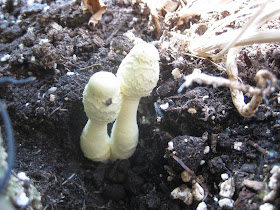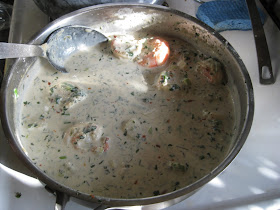I actually took advantage of some Special Offers
For the sale, I had to choose from their pre-packaged (non-custom) kits. I've always wanted to try growing lavender, so that was the first kit I ordered. In all honesty, I'm not sure what I'm going to do with lavender if it grows, but it's just something I've always wanted to grow ever since taking a trip to Washington.
I also wanted herb kits, of course, but I'm not a huge fan of their selection--while their Gourmet Herb Seed Kit (6/7-Pod)
It's then when I remembered that years ago I'd ordered a (non-Aerogarden) herb kit that I never used. I looked through my stuff and surely enough, I found a couple bags of seed I never used.
I ended up getting two of the Grow Anything 1-Season Kit (6/7-Pod)
And so I figured I'd do the experiment of the century: could the Aerogarden Grow Anything kit grow herbs seeds that I'd given up for lost? We'll see in a few weeks.
The Grow Anything kit was pretty impressive. I was wondering--why should I pay the same amount ($17.95) for a kit that has NO seeds as I would for a kit that HAS seeds? The answer wasn't clear on their Web site, but was clear as soon as I opened the package.
The kit comes with 7 empty plastic baskets. They're supposed to be split-apart baskets for easy transplanting later, but the ones I got were definitely in one piece.
They also come with grow sponges, which have the look and consistency of soil much more than I remember. They have a little indentation on the top into which you can drop your seeds. And of course, they have those plastic "grow domes" that you put over the seeds as they're germinating.
They also come with 16 5.5mL nutrient packages and 9 8mL packets. That's a lot more than comes with a standard seed kit (my lavender kit only had 8 8mL packets). So for the same price, instead of seeds, they basically make up the difference by including 8 more weeks of feeding.
My silver Aerogarden was still clean and the brass contacts weren't too corroded on the pump or the arm yet, so the pump still worked.
I took a seed bag and generously poured seeds into the grow pods.
I figured I'd load up the seeds--this way there's a better chance of one sprouting, and if all of them sprout, I'll just prune them down to one or two plants.
I put all seven seed pods in (one parsley, two thyme, two oregano, and two basils). I turned on the unit and most of the pods were soaking up the water.
I saw most because I noticed the two pods on the extremely left and right of the unit weren't.
The problem seems to be with the design of the pods. While they're supposedly compatible with all Aerogarden units, my old 7-pod classic clearly didn't like the longer length of the newer seed pods (which work find in newer Aerogardens).
So, I decided to take out the seed pods on the edges (a basil and an oregano) and save them for some other time. I found some old Plant Spacers to put in their place.
The package also comes with labels you put on top of the baskets. The instructions actually said that to affix the labels to the plastic baskets, you should use a hot iron! I had no inclination to burn myself or some hot plastic with an iron, so I decided to just place the label on top and put the grow dome over it (it is important to use the label to regulate the light that gets to the grow dome).
So, we'll see if I have herb plants in a few weeks, or just some moist grow sponges (in which case I'll plan on reusing them and buying some seeds from my local gardening store.
In other news, I planted the lavender plants too.
This was a lot easier and more straightforward than the Grow Anything kit. I just had to pop it into one of my old black Aerogardens, which thankfully was also clean and working.












































